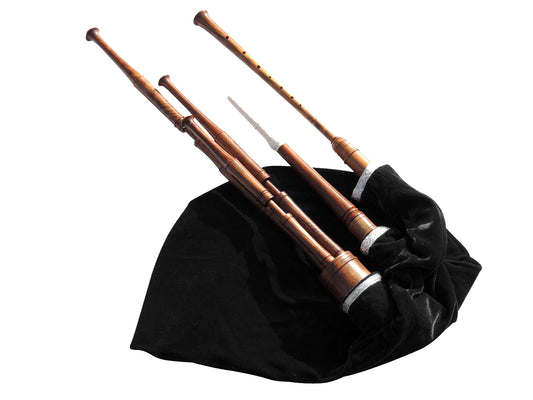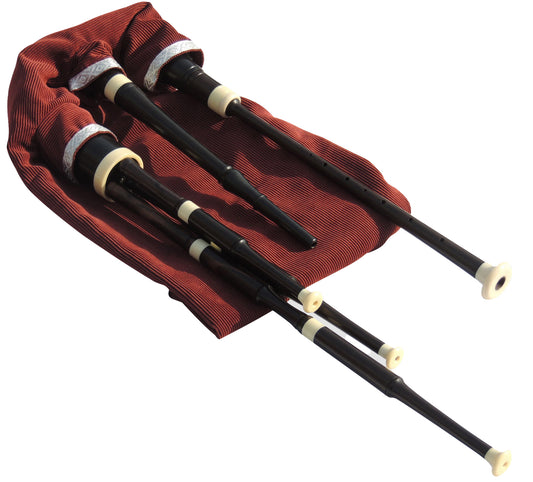-
Scottish Smallpipes - Indian Cocobolo Wood - Wooden Mounts
Regular price From £319.99 GBPRegular priceUnit price per -
Scottish Smallpipes - African Blackwood - Ivory Mounts
Regular price From £949.99 GBPRegular priceUnit price per
Sound Sample
Originally one of the first documented bagpipes in Scotland,
along with the Border pipes, smallpipes were popular in the Lowland areas of
Scotland as far north as Aberdeen. Evidence shows them to have existed since
the 15th century (Highland pipes can only be documented from the 15th Century
in a form definably separate from Irish "warpipes"), when they were
used for dancing and entertainment in court and castle, later they became
popular amongst burgh pipers, and town minstrels until the early 19th Century,
when the demise of the town pipers led to their disappearing from the record.
Being bellows-blown this made them suitable for playing for long periods.
Bellows-blown smallpipes are believed to have entered Scotland via England, and
the continent of Europe, examples are preserved in many drawings, carvings, and
paintings from 15th century onwards, and in Europe from the 12th century
onwards. There is some discussion of the historical Scottish smallpipes in
Collinson's history of the bagpipes.
Scottish smallpipes are distinguished from the Northumbrian smallpipes by the open ended chanter, and usually by the lack of keys. This means that the sound of the chanter is continuous, rather than staccato, and that its range is only nine notes, rather than the octave and a sixth range of the later 18th/early 19th century Northumbrian pipes.
The pipes have a cylindrically bored chanter, commonly pitched in A however pipes in Bb, C and D are also available. Being cylindrically bored, the chanter sounds an octave lower than a conical-bored chanter of the same size, such as that of the Border pipes.The basic scale of the Scottish smallpipe is identical to the Mixolydian scale of the Highland and Border bagpipes: the 7th (leading) note on the scale is flattened, meaning in the case of an A chanter, the low and high G notes are natural, rather than sharp (as
they would be in the scale of A major.)
Scottish smallpipes are normally bellows-blown like the Northumbrian smallpipes and Border pipes. The advantages of bellows-blown pipes, such as greater stability of tuning (due to smaller fluctuations in humidity and temperature of air across the reeds) and the possibility to sing or talk whilst playing make them by far the most popular variation, however mouth-blown smallpipes are also available for highland
players to make the transition easier
The chanter is most commonly unkeyed, however we are looking to develop a model with high B, G sharp, F natural, and C natural keys, to extend the range and give access to accidental notes. Most music written for the pipes uses only the nine notes of its unkeyed range.
Leading players of the smallpipes include Hamish Moore, Iain MacInnes, Allan MacDonald, Gary West, Fred Morrison, Fin Moore, Brìghde Chaimbeul, Michael Roddy, Callum Armstrong, Ross Ainslie, Gordon Mooney, EJ Jones, Ailis Sutherland, Glenn Coolen, Barry Shears, as well as the late Martyn Bennett.


